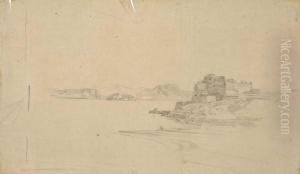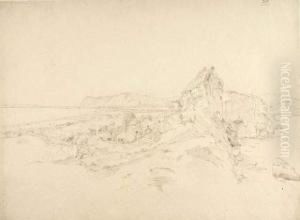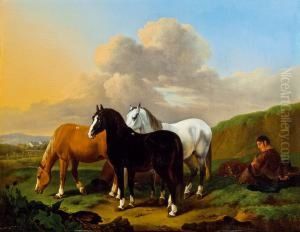Johann Martin Von Rohden Paintings
Johann Martin von Rohden was a German landscape painter born on November 11, 1778, in Kassel, Germany. He is known for his neoclassical approach to landscape painting, reflecting the aesthetic values of clarity, harmony, and balance. Von Rohden studied at the Academy of Fine Arts, Kassel, where he was influenced by the work of the German painter Johann Heinrich Tischbein, known as 'the Kassel Tischbein.'
After completing his studies, von Rohden traveled to Italy in 1805, which was a common practice among artists of the time seeking inspiration from the classical past. He settled in Rome, which was a hub for artists and intellectuals. In Rome, von Rohden became part of the German artist community and was influenced by the Nazarenes, a group of German Romantic painters who aimed to revive honesty and spirituality in Christian art.
Von Rohden's landscapes are characterized by their serene and idyllic qualities, often portraying the Italian countryside with precise attention to detail and a soft, clear light. His works were marked by a sense of timeless tranquility, devoid of contemporary references, which made them appealing to patrons who favored the grandeur and idealism of classical landscapes.
Despite being less known than his contemporaries, von Rohden's work was appreciated for its technical skill and composition. His paintings often featured ancient ruins, reflecting a romantic nostalgia for the past and the influence of classical antiquity on his work.
Johann Martin von Rohden continued to live and work in Italy for most of his life. His contribution to the arts was recognized by his appointment as an honorary member of the Academy of St. Luke in Rome. He died in Rome on June 16, 1868, leaving behind a legacy of artwork that captures the neoclassical spirit and the beauty of the Italian landscape.




















